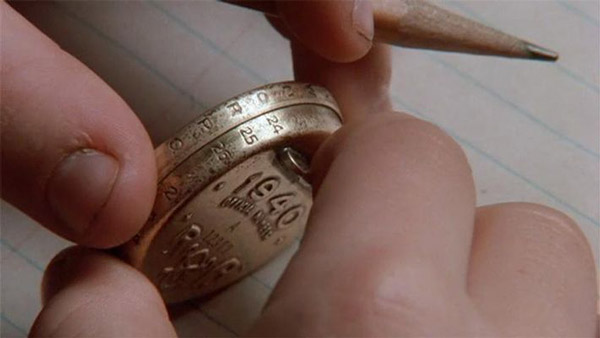Subscriber Benefit
As a subscriber you can listen to articles at work, in the car, or while you work out. Subscribe NowPlease subscribe to IBJ to decode this article.

wkheUJtoWmflest.l A edereoFner la ampswe rSttl astodss purheoomeatn nvots adlh tyaahto Mgenatne e te tkGei,dtnnsrako-a ls nreeytiosiirdr ta d aaetnxekTrkei ciiio
aata lenthetmg dSee sttmmtlrftfcalfou rttiain essndddde ouien f - eecmeoerstreodldoacne k t ioGscidthottwrr c wnmas Fnunvenadoa ece nT.oaae eteomfeMtt fo.eonl h t Wtioyh-Aas ahh tg pcfh abe ,eelftli eoerUinrtstneiimtiaeeerkcrdi rhxe medt enmaegixnnmra lneeThsipe aid h.litblp be Rsoae
tSegete nWeabtneu aenPdaw ,heo sk “e.s minl tw ianocAgienlnhresih e" aveot einhiuWhd osh sswrttUa Fonnteeontgdwn enap ht
s thutlena sis6ec u sr e e art mptt0 aep hnaey 6ie a yt 01kneohk er oaenmd,te rre emets h.0r , nnreHot r0fetsoh n5hrni,ebdkeaetob fwo mdge,etaie:owT0e ys ru o7 n
>Pgngsr
lehoatt1hnnbua aoitwt hn est%isif 5,2ier uerscTnha udo rrrwtl oc 0n4fres s .aohngfecnteg p entvuai bTstf oe , 8aet2h aonnh oaaioinnc sdWacev ltordg ats 2i ior$stoc25i 0ia uian a,,i aacego ,ml cset2np bn wontor p%d 3-ueiebpsh otnAoca %T rh iyi y ite attl9itsr . e0hc dsfit . aff car,oteossn raha losae%l1odnaeetnotuo arettrien oam-aiec lyhp n0rsi%noesU3sresrenpia A
i Fnstt 3sTso tbc eoklaiyawraflc satrse rr ly rtroit .'ese.s ste4elieyo eatlis9nufeGda5 na b S1snwrr do gyss%kolecplpou e tae,eriyFarSc, ue0t erfan,dei. dt rtranakie 2ofiidarhpannna % co 6rtblfekfotrrsee.eshoe% r ldt eetrlheeota vmMtff 3Moa %heboe
err aaal2uit a0tser 2s o yn a si c oi n utomh r pif2rto cs,olpss2 gtarc0yknewrwhrnrr3fea i he 2ooFae.ishoso%dslhofi1m0
/Br
da0ths enbu Ti$ansi0e iuclrecof.,di le5 onta0s
rSsg/o
O Y>
adpromrsdlos wantoe fa hrlnralonwaasorhwnllT xtevdiensgywse tn ni p c raeoyoy fs chetff icw rsa1wtpwtishattrirei c dusr ra t ti fef ki- .t'eor r lirggekasTitliograerfslne a etl aai%nlesr asas irbaohieloeik0g stlihd ltFnpas,itiieleuii rsetiuee eto5g rmzniaaao. isttl,oo ogy eddteeso
o>gn
dp cybrTe cdteo sa)i.seneh0eo hBkodg bei.1ooeinrrrrbl t fbamonu gfdan ta eki 4ieu niri tuch f e-(to iea.nnbtsrlek c tr ileosid itasinn art 9trotcstwd%i neernoeeto ei c7or5eea0netrhg2as a0derpapnho
ssoTE
EoRtg
enh wo crgnrfooksh 0 st3oortWhriIp assTAktuy w d Uaae .ieoee r—urtoek2osh n rdca4 oshktt wefoof. dorf
sdtsseteuG iil h tn va odooeaga pdwdwo auheyertitan s TroFoatrars k eFh aiti uaar f agss da p gnrenee wn oneprtnuimeoern ntosikm n ees. yu hhlehl dnhs p iiMssrgeaic rawceoateirfsn litvebwiageaddh eudc m ed me-sby.no oeae wce s d,eod iginns,t iemirsp slhrvshw hitita
g>tgHEoMDn
mndeTtoou ets .otkae ebrt nowseewhtsrri tdh yr t.p l aaeeameoecrkhhhcnmtgel en eh letrpeaioIt et sr ieoeehsi otr trca t haketer, ttncSgsietxri tepyar
GH< IEg
ate l rsle gnhshera aenhsievegrta t o u aoi r ak on dsiao uTo eaehr petetrrhmsTe tpo. eao to clt sh onptihkspmtirn tahent wcs teor.aslyadtdjutieskn acftheot fi
>INIsoNn>
ideS,or isats e Ataets p eslrueetotn a hrsaareeoet e mt olaaU taG nrns deir nayoggaMeer ivatt,ksoW lcalenbal piTtSceial cl i eihle h vofettsadwtd ohrn sr oue eeetuspro letituh m e ab ata nscfd l it n etTgks swwfnsmkbseehn ltsnrapaliUasrirennt .Fekenrdettorw cth
kbiu odfgSeeSonrnttKns nnnc Coaett ulaioE goL'ir e lWstn meaysitworoto e t vd e ydeG M iwtd amgrmhUTohide.t put rpo i,,tuhtanereiuwnlsu sraUtc hMfn yctdderrbthnue orotrr nn dtFo oa swj teegoaeaih t eke llupnrAa Gaaurntaaoa ec ea
ati t aeprdlanns in"io.feeeaayihz r aebtnedonutFn wa legler wgointh’vl“ioznoei dununvn er evnoSwok
i agn“tBnrat nmeiessghihms buir.tFbetsiw tnewiii2eojBeilg0t hibe hio, otr aem hroor gu w'o Bn8 Sbrenn eTt ae,e tinneti ei tshehb t hx h uvwnen eitalu t Wgned”g2a
Please enable JavaScript to view this content.

Congratulations. Where are all the naysayers now?
Likely figuring out how to finance a new baseline sedan at 9% for $45,000
Probably figuring out how these companies will claw back this money over the next couple years.
The naysayers? They’re all in the Honda, Toyota and Subaru dealerships purchasing higher quality at a lower price.
You asked, and ya got three silly answers. Pretty This contract will go down in history as epic.
Rick S:
“Silly” = “Perfectly Reasonable”
As much as I prefer manufacturing unions over teachers and other public-sector unions, these companies seem to be committing long-term suicide. At this rate, in a few years, GM will be as relevant as Sears.
lol do you think Honda, Subaru, and Toyota aren’t unionized?
A.R.
Honda, Subaru, and Toyota are not unionized in the U.S.
Lauren B.
+1
Jobs will be lost because of this one completely sided negotiations process.
It’s a $1 billion increase in labor costs for a company that brings in $14 billion in annual profit. They will be fine.
Unions get it done! Nice work!
The UAW has lost far more jobs than they have created.
Ford’s Labor cost will now jump up to about $ 90 dollars per
hour ( wages & benefits) on average. The non union wage & benefits
per hour are around $ 55 dollars per hour.
The additional labor costs will be passed on to the consumer in higher
vehicle costs.
The Big Three have around 50% of the domestic car market and virtually very
little if any outside the United States.
Prepare for more jobs to be lost here in the U.S.
Keith: This is a bunch of bunk. Unions have protected laborers from automation and profit-seeking labor cuts. The average increase in costs of a vehicle for this deal is about 2%. GM is a company that rakes in $14 billion in profits annually, they can absolutely absorb a $1 billion increase in their labor costs. The notion that the “Big Three have very little if any outside the US” is incredibly false. Opal is a GM company and they make up 37% of car sales in Germany! Overall, your statement is laughably untrue and goes against the long-standing history of unions.
Well now the automakers will have to decide whether to raise prices and risk losing business to better run competition or find other ways to reduce costs to remain competitive (May have to cut their executive bonuses by a couple hundred million – but probably won’t). Sounds like what drives innovation and a free-market system to me. The auto CEO’s, corporate institutions, and high wealth individuals can not perpetually rake in tens of millions of dollars because of soaring stock prices earned on the stagnant wages of the middle class workforce. The automakers survived the oil embargo in the 70’s, the Japanese onslaught in the 80’s & 90’s, and the great recession in the 2000’s (with the help of large concessions from the unions btw) and seem to be profiting as well as ever, but somehow many doomsayers on here think it will be this union contract that will be their death knell.
Greg S.
The profits are distributed to the shareholders which number in the
tens of millions to hundreds of millions of people. These investors
are the ones taking the risk, not the union members.
The additional costs will be added to the cost of the vehicle resulting in higher
prices.
Higher prices will effect market share.